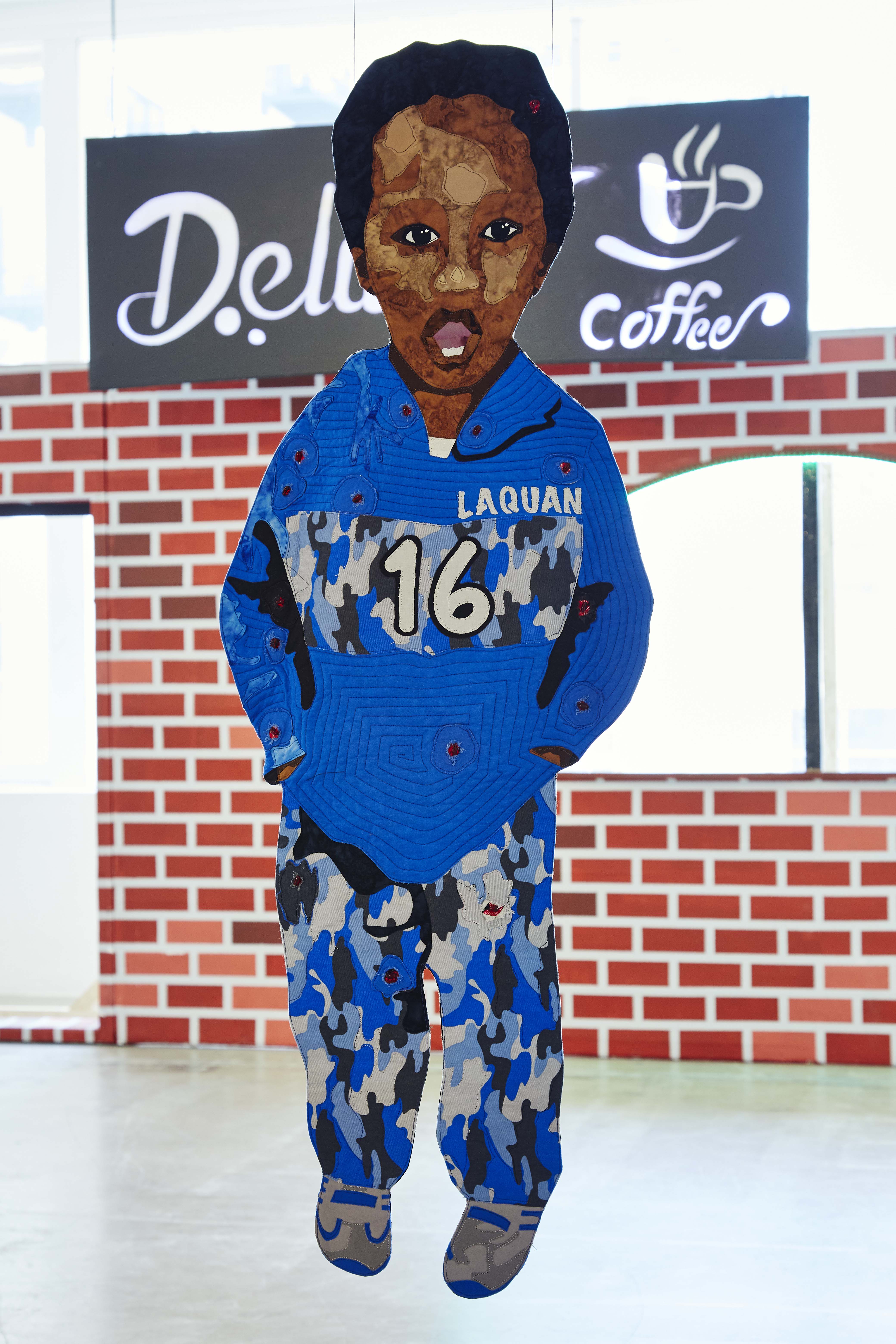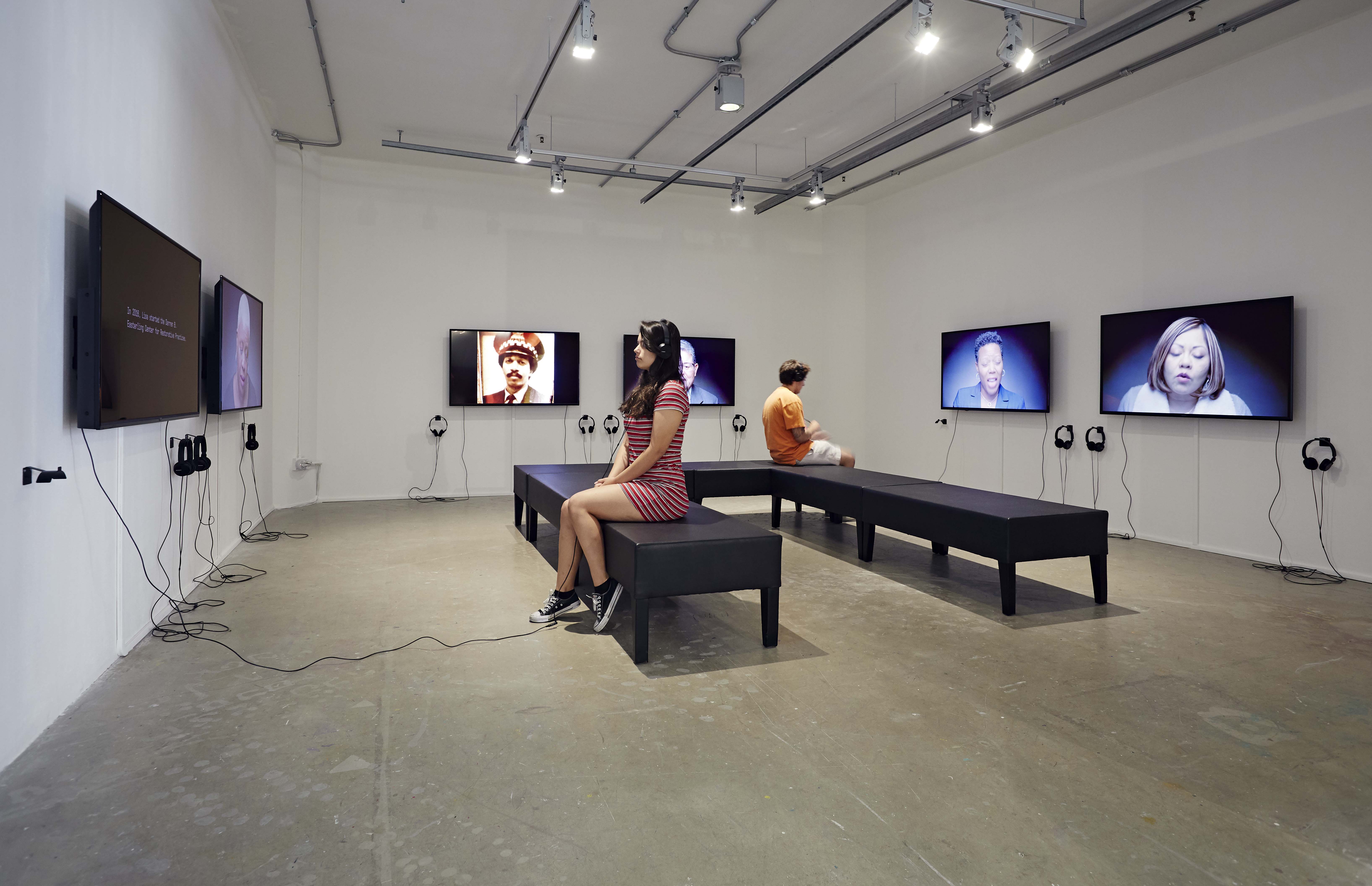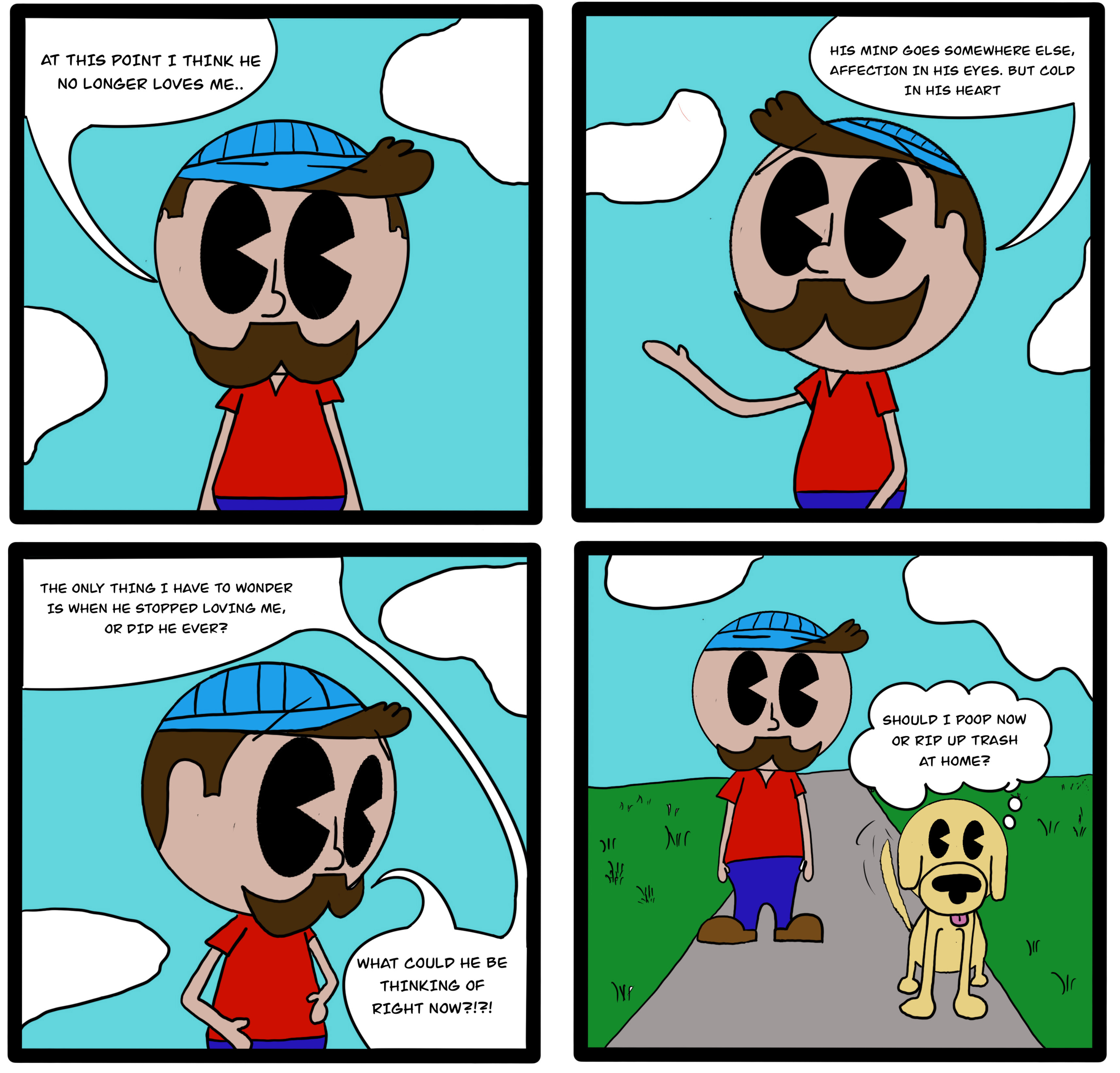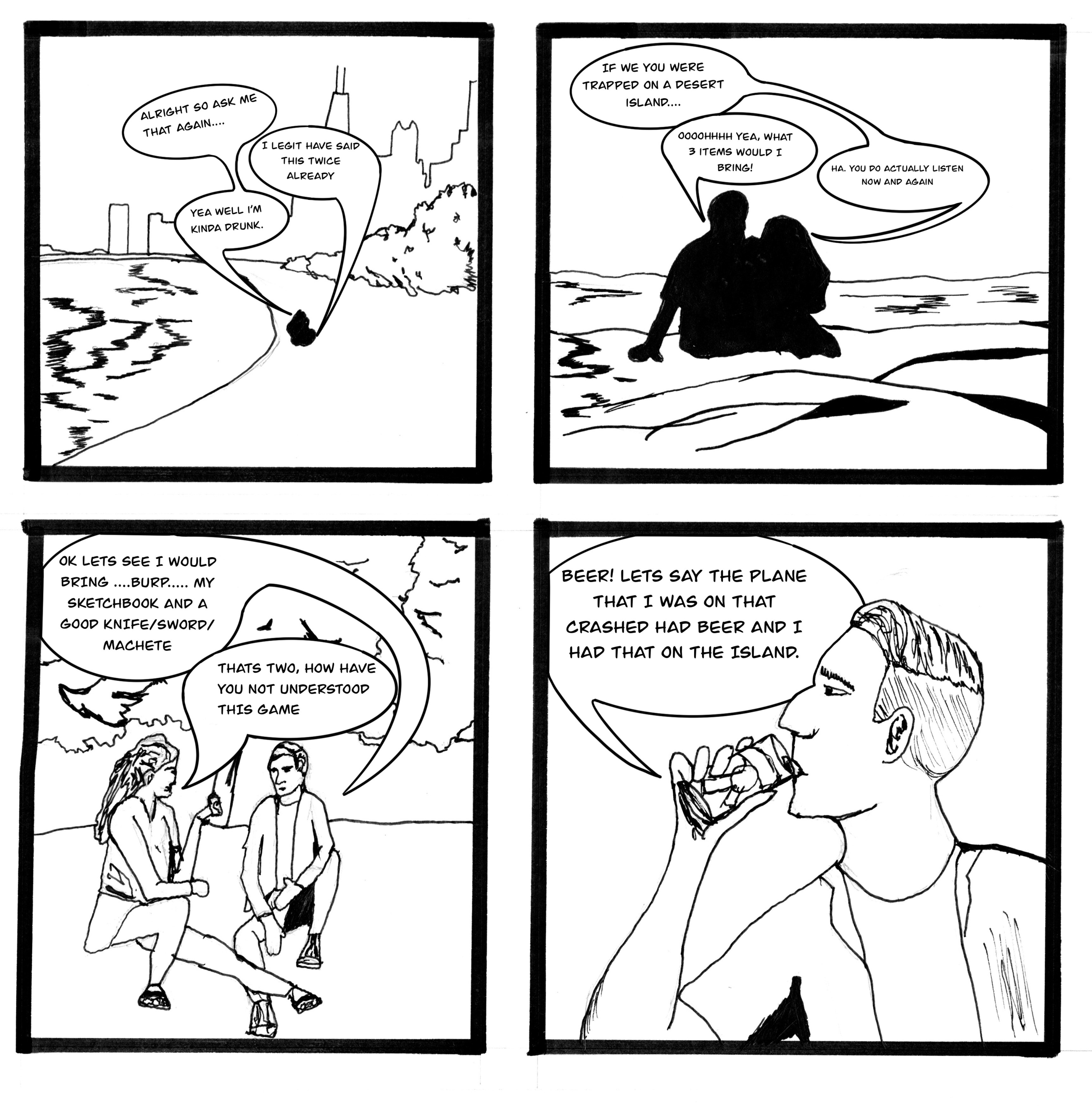
Walking through “Envisioning Justice,” an exhibition created by the Illinois Humanities Initiative, I felt first, refreshed, second, overwhelmed, and third, responsible. The exhibition, which is on view at the Sullivan Galleries through Oct. 12, imagines a world without carceral regimes, and many of the artworks are co-created by survivors of the penal system. A variety of Chicago voices, spanning community art programs, activist circles, and individual artists, call on visitors to investigate, discuss, and pursue their ideal visions of liberation.
Curating the revolution is a popular gig for contemporary galleries. It often smells of high money and, more than I wish to, I cannot help but roll my eyes and feel hopeless at the cold minimalism in both presentation and depth of relevant topics. Too often, socially charged works placed in lofty institutions convey an absence of community, and their demands only reach the galleries, curators and others employed at fine art establishments. Although the funding of private institutions can widen the audience for activist art, shouldn’t community involvement in both the process and the result be centered in the presentations of such works? When I leave an exhibition portraying the efforts and effects of social change, I should ask myself many questions, but not the ones I am often left with: Is this show for me? And if not, who is this show for?
Stepping into the Sullivan Galleries, I was greeted by former teaching artist Gabriel Villa’s “We Are Witness” (2019), a cryptic two-wall wide mural depicting an ouroboros and a caged outline of the United States. In between Villa’s blue and mustard golden mural, three quilted brown silhouettes hanging in the air are exhibited as part of community activist Dorothy Burge’s work. One of Burge’s quilts shows a bullet-torn toddler with the name ‘Laquan’ and the number 16 printed on his chest. The visual reminds visitors of the gruesome and senseless death of 17-year-old Laquan McDonald.
I knew I was there to be engaged by the voices who, unfortunately, will most likely never receive much monetary gain from their pursuit of change. In spite of this, socially engaged artists create to inform, incite, and express momentum. The emotion and messages in their work are honest, and sincerity is refreshing to experience in bourgeois gallery settings. The productions, ranging in medium from sound and print to video documentation, derive from two years spent by exhibiters researching mass incarceration, an issue that persists in the Chicago area and around the United States.

Mass incarceration refers to the high rates of imprisonment in communities of color, the result of racist policing and criminal justice practices. A full quarter of people incarcerated around the world are incarcerated in the U.S. Although U.S. population growth and crime rate are on the decline, mass incarceration has increasingly been in the public eye, with discussions about it dotting both progressive and conservative campaigns since 2014. With the rise of harsh drug sentencing (see: Nixon’s War on Drugs), ‘tough on crime’ policies, and the increased surveillance of people with past offenses, prison growth and crime rates have had an inverse relationship since the early ’70s. Courts also give lighter sentences to white people compared to black people for the same crime. Those mostly visibly affected by the U.S. carceral state are black and latinx men, who made up 56% of the prison population in 2015.
Every year in Illinois, 35,000 people, a growing number of them women, come from prison centers and return to only seven zip codes in Chicago with little to no guidance or upward mobility. To Chicago and around the country, mass incarceration is the systemic loss of a mother. It is collecting calls from a father who is imprisoned 10 counties away. It is visiting a brother every month in a room full of strangers. It is seeing a sister and a friend in blue jumpsuit and chains. Mass incarceration impacts the lives of youth living in low-income communities of color and reifies stereotypes of black and latinx youth.
Through arts and investigative humanities, “Envisioning Justice” magnifies the voices of the people and communities most affected by a socially corrupt system. Instead of asking myself, “Who is this for?” I asked myself, “What can I do?”
Every text, visual, and media object presented in the gallery has an emotional charge, not unlike that of a protest. Rage and urgency combine in Angela Davis Fegan’s series of letterpress works, calling on queer visibility, anticapitalist clapbacks, and the textbook talks surrounding education reformation. “The Lavender Menace Archive” (2014-2019) is a bold collection of politically charged posters like “RAINBOW FLAGS ARE BECKY TO ME,” and “THE BINARY: A TOOL OF SEGREGATION AND OPPRESSION” printed on a variety of surfaces.
To imagine a just world is a heavy feat. The young voices presented in “A Spoken Future” (2018), a video initiative by Scrappers Film Group, looped in my head while I was still reeling over the severity of multimedia artist Dorothy Burge’s “Years Lost for a Wrongful Conviction: Quilt #2” (2019), a quilted work of a wrongly convicted inmate’s open letter to the public. The intensity of the exhibition forced me to walk out a couple of times, only to return, my thoughts decongested, to give a new piece the respect and attention it deserves. Throughout the exhibition, viewers do not get a chance to march in complacency. One is activated by today’s pressing issues of deportation, police brutality, increasing homelessness, and other offenses to human rights.

Socially investigative pieces, especially those with serious groundwork, ought to give viewers a new panorama on our lived experiences, and this exhibition, cushioned with a library that recommends books by bell hooks, Thomas Sugrue, and Safiya Umaja Noble, absolutely succeeds in that regard. However, with just over 35 empowering voices informing my visit, the usual gallery walk (a maximum of 3 minutes spent at each piece) is too fast for the emotionally in-depth works of “Envisioning Justice.” The gallery space is crowded and cramped in its curation of the pieces, which at times made me feel overwhelmed. I thought, “Can a space like the Sullivan Galleries, which is also exhibiting a totally unrelated faculty show, provide true justice to an exhibition like Envisioning Justice?” The question is similar to, “Does activist art belong in ‘high art’ settings?” For some people, the answer is not a simple yes or no. Some pieces in the exhibit were created especially for the Sullivan Galleries, while others will return to their corresponding communities, extending their ‘lives’ beyond their display in the gallery. Large-scale sculptures, like Little Village artist Adela Goldbard’s “The Last Judgement: Ritual Destruction as Aesthetic Disobedience” (2019) should absolutely survive the white walls of privileged institutions. Goldbard’s stand-alone sculptures, co-created by Mexico-born Artsumex Collective, stand in relief to the wall like props or stage sets, lined and blinking with lights. One of the cardboard structures, which resembles a parked car, is labelled “U.S. Customs and Border Protection.” Flashing lights are affixed to the front and rear of the piece, giving the sculpture a sense of urgency. The fabricated car points to Goldberg’s corresponding piece, a storefront of a panadería, or Mexican bakery, that reads “El Nopal: El PAN DE SU HOGAR.” In both sculptures, the attention to material choice, visible in the carefully measured wood and grainy paint on the awning of the bakery, show the detailed and skilled artist’s hand in its construction and presentation. In a Little Village performance, written and performed by residents, the pieces are set to be set on fire on November 2 in a spectacular finale. Other notable community initiatives centering marginalized voices are Free Write Arts & Literacy, which provides art and education to criminalized youth, Red Clay Dance Company, and Young Chicago Authors.
Another durational piece of note is the geometrically inclined “resistance structures,” part of Project Fielding’s “Free Town Field Build” (2019). Project Fielding is a collective that encourages women and non-binary people to participate in the fields of design, woodworking, and construction. Both structures serve as foundations for a greenhouse project built for #LetUsBreathe Collective at their The #BreathingRoom Space. The wooden bones of the pieces are decorated with a number of colorful expressions and inspiring quotes, like “We Are Each Other’s Harvest,” written in vibrant sharpie hues. From the handwriting, one can tell the large number of participants who were a part of building the structures. The bigger foundation resembles a greenhouse, and it also doubles as an altar for the recently deceased Aerin “Nefertiti” Cooper, a member of #LetUsBreathe Collective and launcher of Aerin’s Place, a creative and healing space for trans, non-binary and gender-fluid individuals. “Altar to Aerin “Nefertiti” Cooper” (2019) celebrates the life of the teacher and activist with candles, pictures, and memorabilia. These pieces are expected to be utilized and moved to a lot in Back of the Yards, a neighborhood struggling with neglectful city commissioners.
During my final time spent in the exhibition, I thought of a friend who had expressed great interest in being a part of community-led art organizations. In conversation, he had mentioned a quote from lifelong activist Toni Cade Bombara, author of “The Black Woman: An Anthology” and prominent supporter of black American women writers: “As a cultural worker who belongs to an oppressed people, my job is to make the revolution irresistible.” Artist or not, if you’re interested in familiarizing yourself (and possibly joining!) the Chicago collectives who are uplifting the voices of Chicago’s neighborhoods, “Envisioning Justice” calls on you to set aside a day to provide full, undivided attention to the powerful perspectives it has brought together.








Amazing exhibition! Kudos to the curating team: Alexandria Ergebu, Curator (#finding_ijeoma); Jameson Paige, Assistant Curator (#deepdeep_blue); and Danny Orendorf, Curatorial Consultant (#the_magicians_assistant)